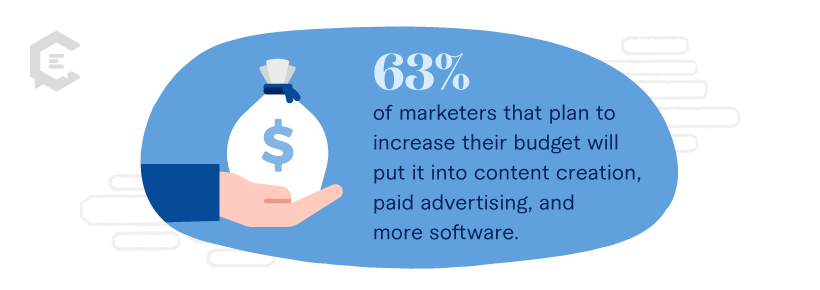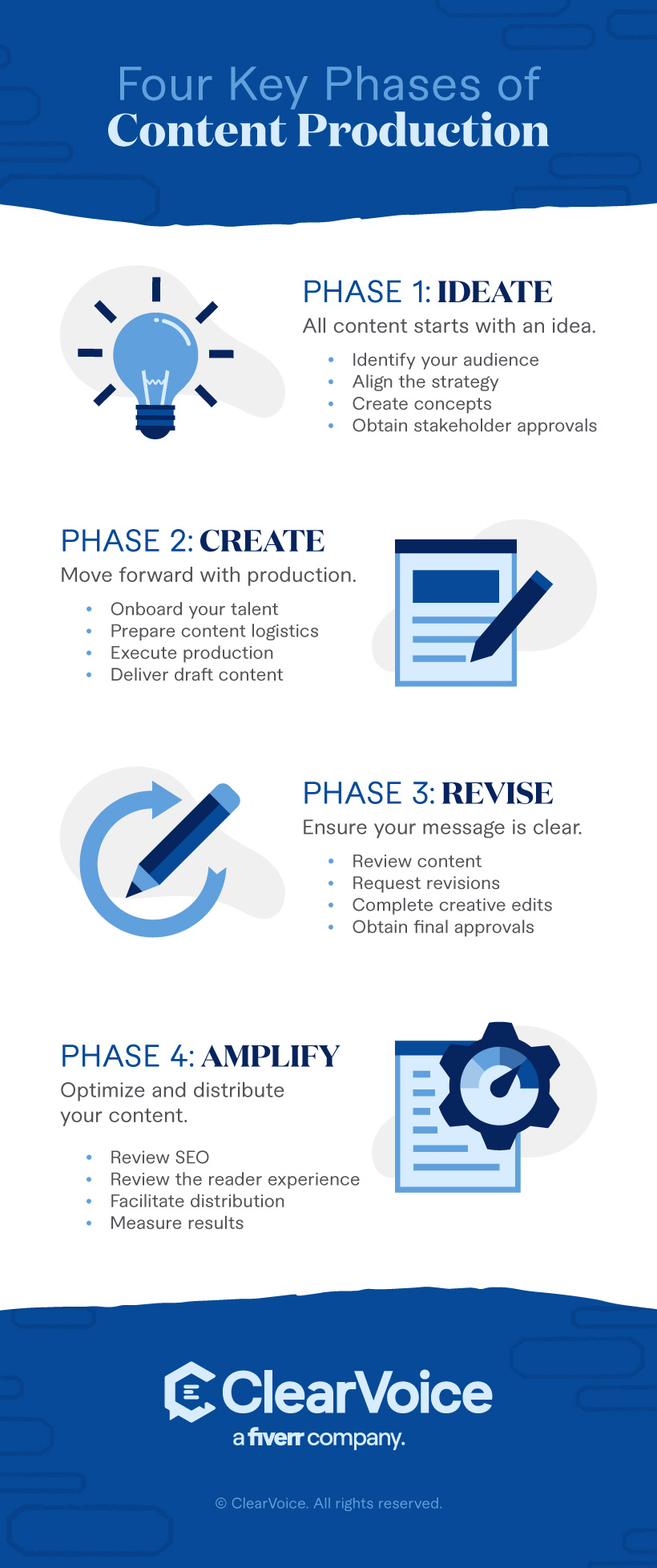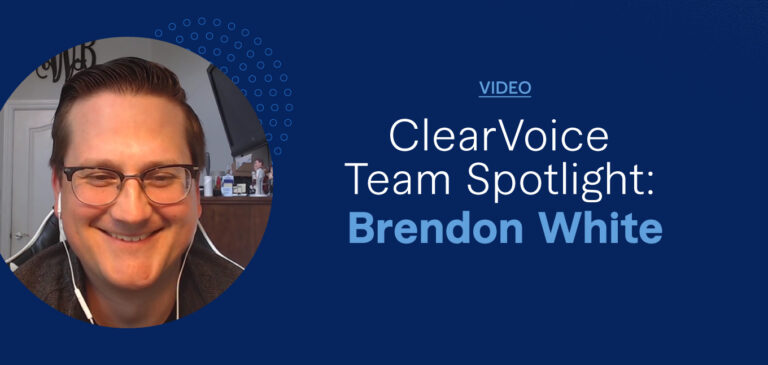Content creation is the backbone of your inbound marketing approach, and brand reputation hinges on quality.
But how can you get the writing done consistently? Where do you find additional talent to assist with campaign ideation and content creation?
And how in the world do you scale all this to meet your customers’ growing and evolving needs?
This article will break down everything you need to know about content creation. We’ll cover the four critical phases, the types of content creators, and expert tips for your process.
Creating content takes a process
Think about it like this. You wouldn’t suddenly decide to climb a mountain and hope for the best experience.
Instead, you plan for a successful journey. You map out a training program to optimize your health, research the proper tools for the environment, and go on multiple practice hikes to prepare for the main event.
“A brilliant strategy, blockbuster product, or breakthrough technology can put you on the competitive map, but only solid execution can keep you there. You have to be able to deliver on your intent. Unfortunately, the majority of companies aren’t very good at it, by their own admission.” — Harvard Business Review
As you dream of how to navigate your next content marketing campaign, go all-in with a success mindset — and a documented process.
What is content creation?
Content creation is the strategic process of crafting text and visuals that align with the core interests of your audience and brand to reach documented business goals. Generating content requires mindful planning and diligence.
Individual brands such as bloggers, coaches, and professional service providers often handle content creation responsibilities themselves. However, they can also hire freelancers to accelerate the production of high-quality content for their digital channels.
On the other hand, small businesses and enterprises need to create a content team — complete with content writers, editors, graphic designers, and strategists.
Businesses can build an in-house team from scratch, manage multiple freelancers, or hire a managed content service that does it all.
Once the creation process is crafted and mastered, the resulting content can boost engagement, attract leads, and close sales, growing your business and industry influence.
Why you need a content production workflow
Without the proper preparation and gear, mountain climbers stumble, make errors, and… go missing. Is that what you want for your business? (We know it’s not).
Adopting a content creation process can:
- Make content production and publication consistent
- Give your marketing team clear instructions and task lists
- Maintain regular engagement with your audience
- Finally, bolster your overall marketing strategy and approach
According to a HubSpot recent years’ Marketing Trends Report, 82 percent of marketers are actively invested in content marketing. Additionally, 63 percent of marketers who plan to increase their budget will put it into content creation.
Bottom line: It’s best not to half-ass your content creation.
If your current workflow relies on trickles of inspiration, squeezing asset creation into open blocks on the calendar, pushing links out for the world to see, and hoping they go viral as you sit back and watch the analytics populate, you can do better.
A HubSpot study of blogging data accumulated from 13,500+ customers found that “companies that published 16+ blog posts per month got about 4.5X more leads than companies that published between 0-4 monthly posts.”
Quadruple the leads!
Can you imagine going into a meeting with the marketing and sales teams and reporting those numbers? We can.
Shift your workflow to intentional ideation, creation, revision, and optimization.
The four critical phases of the content creation process
Phase 1: Ideate
All content starts with an idea.
Ideas — the pure, robust fuel for content creation — emerge as random thoughts and slowly take shape as we work a bit of logical processing magic. So hold fast to those seeds of content, whether you’re jotting keywords down on a whiteboard in a boardroom or taking mental notes in the shower. Nurture them to discover their viability.
“There is one thing stronger than all the armies in the world, and that is an idea whose time has come.” — Victor Hugo.
Do your ideas speak to your audience? Do they align with your branding strategy? Do they tell a story? Do they fit with your resources? Let’s find out:
1. Identify your audience.
Brilliance shared with the wrong people goes nowhere. Do you know your target audience, what they care about, and where they’re hanging out today? If your audience analysis and buyer persona vignettes are already a year old, they could be outdated.
Discover real-time audience trends and define your customer’s journey by focusing on current consumer behaviors, advises Semrush. People make buying decisions based on multiple, fluid factors, overlapping how they associate and engage with your brand daily.
For example, an ambitious mountain climber searches for gear at outdoor adventure stores. But maybe she’s also browsing protein shake options at health food retailers and the latest HIIT workouts on YouTube. Discovering this overlap in current audience interests (Semrush has a tool for that) lets you better understand and identify who you’re speaking to determine if your ideas align with your audience’s core needs and interests.
With additional analytical digging, you can also discover what types of content resonate with your specific audience and will help move them through the customer journey. For example, your strategy calls for blog posts and podcast episodes. Then, you discover your most active engagements online are happening on video clips posted to Facebook.
After all, more than 80 percent of people check social media at least once per day. Yet, when it comes to Facebook, it’s the go-to for 87 percent of millennials, 90 percent of Gen X, and 96 percent of baby boomers, according to a study by The Manifest regarding social platform usage.
If this scenario sounds familiar, it’s time to pivot!
Questions you should ask when you’re identifying your audience:
- Have you determined your target audience?
- Have you assessed your audience’s needs and desires?
- Have you chosen particular personas to address?
- Have you identified the types of content to engage your audience best?
- Have you determined if you will collaborate with your audience?
2. Align strategy.
Your brand’s goals are ultimately guided by why you do what you do — whether it’s offering services, products, or both. Have you defined them? Have you documented them? Have you integrated them into your content strategy?
Goal setting increases production by an average of 19 percent, according to a theory developed by psychologist Edwin A. Locke, Ph.D., the Dean’s Professor (Emeritus) of Leadership and Motivation at the R.H. Smith School of Business at the University of Maryland, College Park.
If you need a refresh (or a fresh start), here are a few highlights of Locke’s highly-regarded findings:
- Goals should be specific. Instead of stating “We need to create more blog posts this year,” create a statement such as, “We will increase from one blog post per month to one blog post per week by implementing the assistance of two freelance writers, which are accounted for in our marketing budget and managed by our in-house content director, starting on the first of next month.”
- Goals should be achievable. Do your aspirations fit within your time, monetary, and staffing resources? The blogging goal is possible only if you have the budget and management available in the above example.
- Goals should address groups and individuals. Think of the marketing team as a whole, and express the goals you want to achieve for the company. Then, identify how each individual within the team will funnel their talents into this process.
As you solidify your goals, build upon your content strategy by researching the types (and performance of) content you want to create. Is your audience indeed responding to the content concepts you’re proposing, or are they simply something you think would perform well? Can you find a balance between both?
Have you outlined the KPIs for the goals you’ve set? Can you estimate how the content you plan to create will funnel into the benchmarks? Use these hypotheses to measure the success (or failure) of your strategy.
Did you look to others in your industry? Completing a competitive analysis of their current marketing efforts and gleaning what’s working can give you a leg up on what to try or steer clear of.
Communicate with stakeholders. They have a vested interest in seeing you succeed, and although they likely won’t have the marketing prowess you possess, they know investments. Listen for nuggets of direction.
As you finesse your strategy and make sure it aligns with your goals and corporate intentions, update your documented branding and style guidelines to share with all team members, both in-person and remote.
Questions to ask when aligning your content strategy:
- Have you identified your brand’s goals?
- Have you gathered any research to consider in the content concept?
- Have you estimated the impact of content on the KPIs for those goals?
- Have you done a competitive analysis of your competitors and their content?
- Have you collaborated with or sought input from key stakeholders?
- Have you created brand and style guidelines for your content?
Here are a few resources to help you get started:
- 7 Meaningful Activities to Develop Your Brand’s Voice
- How to Make an Editorial Style Guide That’s Freelancer-Friendly (With Templates for Google Slides, PowerPoint, and PDFs)
3. Create concepts.
As you move forward in your ideation process, you’ll fine-tune the concepts you want to bring to life, from identifying your audience to aligning your strategy. But what does this look like?
In content marketing, storytelling has become a dominant approach to attracting, engaging, and winning over potential consumers. Screenwriting lecturer and teacher Robert McKee stresses the need for business leaders to think like authors in his book, ‘Storynomics Story-Driven Marketing in the Post-Advertising World.’
On page 29, McKee explains, “We advocate a solution that’s tens of thousands of years old, the mode of communication that best fits the mind, that best connects one mind with another, that wraps the clarity of a rational message inside an emotional package and delivers it with sticking power: story.” He elaborates that in the always-on, digital world, the ability to capture attention is a marketer’s single most valuable asset.
So, what kind of story do you want to tell? How will it play out? Via an interactive quiz or multi-page PDF download? Does the concept align with your goals and strategy? Does it differ from what your competition is producing? Once you’ve nailed down a creative concept, decide who will help you make it a reality. Is your internal team up to the challenge? Will you need to bring on freelance content creators to bring more skills and energy to your team?
Finally, wrap up your concept in a compelling creative brief with a bow. This essential document outlines all the project details (and links to additional resources) needed to execute the content creation.
Questions to ask when creating concepts:
- Have you thought about the story you want to tell?
- Have you determined if the content will be interactive or not?
- Have you determined who will collaborate on the concept (e.g., stakeholders, talent, audience)?
- Have you brainstormed concepts with strategy in mind?
- Have you creatively differentiated your concept from competitors?
- Have you written a compelling creative brief?
4. Obtain concept approvals.
Ideation is just that: ideas. Although you’ve parsed the dynamics of your audience, aligned your strategy to their needs, and landed on a concept that makes sense, it needs to get the green light from everyone who has an interest in its viability, not just the marketing department.
Questions to ask when obtaining approvals:
- Have you estimated a budget? Is it realistic?
- Have you included wiggle room for shifts within the project workflow or scope creep?
- Have you planned your team structure? Do you need to outsource?
- Have you determined all the needed resources and assets?
- Have you determined and agreed on the KPIs for evaluating success?
- Have you aligned the needs of all departments involved?
- Have you obtained approval from leadership?
Phase 2: Create
Move forward with execution.
You’ve laid the groundwork. Now we’ll bring the ideas and concepts you’ve developed to life. To transition from planning to production, follow a basic workflow of identifying and securing individuals to do the work, fine-tune the production process, and present the final deliverables. Here’s how.
1. Define your goals
First, it’s important to understand who will be involved in creating content. This includes who will be writing, editing, reviewing, designing, approving, etc. Finding the best talent to finesse your branding into craveable content can be a challenge. You’ve defined what you need, and now it’s time to produce. But, how do you get from ideation to execution? You need talented creatives to bring your concepts to life.
You have two options:
- Work with your in-house employees. This includes members of your marketing team, but also consider looping in members from the advertising department, art directors, and project managers.
- Hire freelance teams to supplement your team. If you don’t have in-house videographers, designers, or content writers, simply outsource remote contributors flexibly. They’re quick learners and ready to focus on your content production needs.
If you realize you need extra hands on deck to improve your content production, onboard reliable freelancers who will follow your guidance and get the work done. Period.
So, we have to pause and wave our flag for a moment. ClearVoice takes the guesswork of finding, vetting, hiring, onboarding, collaborating with, and paying freelance teams. We’ve done the heavy lifting to make securing talent — and guiding them through the content creation process — the least of your worries. We can handle it all.
Questions to ask when securing talent (if you don’t hire ClearVoice to manage freelance teams for you):
- Have you reviewed samples of their work?
- Have you determined if they can produce the type of content you need?
- Have you vetted their credentials or publicly accessible social media?
- Have you established a process, contract, and payment system to collaborate legally?
- Have you discussed copyright issues and the use of bylines?
- Have you determined a process for negotiating terms and hiring and onboarding freelancers?
- Have you shared branding guidelines, editorial guidelines, and a content production calendar?
As you work on securing freelance talent, consider browsing:
2. Create detailed assignment briefs
Next up, relay your content needs to the talent producing your assets. Have you established a process for assigning content? As you develop this, assignments should be consistent and accessible at all times. A shared cloud-hosted content management and calendar system (like ClearVoice) will keep everyone in the loop on when to expect assignments, so they can plan the time necessary to produce the content.
So, what goes into a great assignment brief? Details! Lots of them!
- Topic and a summary of the project
- Target audience with buyer/audience personas
- The goal of the assignment
- Keywords and SEO you’d like included
- Deadlines for completion (draft phases, final draft, editing turnaround times)
- Links to branding guidelines and editorial guidelines
- Links to resources (similar content, research materials)
- Credentials for special access. This includes press passes, conference admission fees, and association memberships.
- Details for meetings, interviews, or PR contacts
- Access to software, services, or equipment to complete the assignment
3. Lay out your logistics
Logistically, you’ll also need to think of securing permissions for anyone visually or audibly represented in the content.
For example, if you’re hiring a photographer to take environmental portraits of a satisfied customer to accompany a written case study, you’ll need a model release on file. Suppose your freelancer chooses to photograph the subject away from their home or the business they’re backing. In that case, you may also need to secure a permit and property release for public on-location still and video shoots.
Always think about the content project as a whole. In addition to the creative work being tackled in-house and by freelancers, will it also be supplemented with PR materials? Stock photography? Creative Commons infographics?
Questions to ask when preparing logistics:
- Have you established a process for assigning content?
- Have you clearly outlined the assignment topic and goals for the talent?
- Have you set manageable deadlines for the content?
- Have you provided any additional resources the talent may require to produce the content (e.g., research materials, special equipment/services/software)?
- Have you arranged any necessary access for the talent (e.g., press passes, conference passes, association memberships, PR contacts, meetings, visits)?
- Have you secured any needed permissions for the talent (e.g., model release forms for photos/videos, permits for location photography/videography)?
- Have you secured supporting creative assets (e.g., PR images, stock photography, infographics)?
Read a related article:
4. Produce the first drafts
After sharing assignments with the people who will be creating the content, let the creativity fly! But not without ample check-ins and guidance. A weekly meeting to assess whether or not the project is moving forward as planned is imperative for long-term projects. For shorter projects, a quick communication mid-way through to see if there are any questions on either side can be helpful.
Whether you’re overseeing the project or nose-deep in the creation process, take a step back and assess the progress as you work toward the deadline.
Questions to ask during production:
- Have you or the talent done the necessary research for the content?
- Have you or the talent cited any sources used in the content?
- Have you or the talent set interviews with the right subject matter experts for the content?
- Have you or the talent asked the right interview questions for the content?
- Have you or the talent followed the outlined topic and goals of the assignment/brief?
- Have you or the talent followed the appropriate style guidelines for the content?
5. Deliver draft content for review
You’re in the home stretch, and it feels incredible to see an idea come to life. Now, it’s time to show the work off to the team. Delivering the content also follows a system. Should it be uploaded to a cloud-based platform (like ClearVoice) so everyone can view it? Does it need to be reviewed by a smaller team first? What format should it be presented in?
For example, let’s say the final project is an infographic. Do you show the team the artwork separate from the text scripts that will eventually overlay the visual? Or, do you wait and show the more polished, complete draft? Perhaps both are a good idea, especially when preparing for the first round of feedback and revisions.
At this phase in content production, someone may fail to complete their portion of the project. Hopefully, this will be identified before the final deadline through regular communication and check-ins. But, if not, do you have a plan in place for unfinished work? Do you have someone on the team who can step in and complete the task? Are you ready to hire a freelancer to do the work? Again, contingency plans can save your entire effort from failing.
Questions to ask about content delivery:
- Have you established a process or system for delivering the content?
- Have you set contingency plans if the content can’t be delivered on time?
- Have you determined who oversees the initial review and deliverables?
- Have you determined to share content in different phases of development?
Phase 3: Revise
Present your thoughts.
A deadline is not an endpoint. Although the content changes hands from the creator to the editor or producer, it’s also when another layer of creativity emerges.
Revisions allow for tightening text, clarifying concepts, and picking vibrant visuals to make the piece shine. This step shouldn’t be glossed over as a final checkmark before distribution. Instead, take a slow, mindful approach to polish the content until it fits your exact goals and needs.
You didn’t come this far to publish “good enough content.”
1. Review draft content
After the initial read-through or review, put on your editor’s hat and consume the content with the assignment goals and branding in mind. Does the piece hit the mark?
If not, review the assignment brief thoroughly and adjust it to align the draft with what’s needed.
If yes, then move on to editing and proofreading. Whether you do this internally or hire a copyeditor, this step is crucial for fixing grammar errors, correcting misspellings, improving overall structure, creating clarity, and fact-checking the text and quotes, according to The Writing Center at the University of North Carolina at Chapel Hill.
Additional editing tasks to consider include:
- Double-checking quotes and citations against the source
- Scanning for plagiarism and copyright violations
- Creating feedback to guide any content changes needed
Need some help in this department? You’re not alone. It takes a skilled eye to find dangling participles and storyline inconsistencies in a YouTube script. Consider hiring a freelance editor. You can discover who you need to reach out to in our post:
Questions to ask when reviewing content:
- Have you thoroughly read or reviewed the content?
- Have you determined if the content covered the assignment goals?
- Have you edited the content?
- Have you vetted any quotations, citations, and/or cited sources?
- Have you done a gut check or scan for any plagiarism?
- Have you done fact-checking?
- Have you made notes to give feedback to the talent?
- Have you double-checked that proper branding and editorial guidelines were followed?
2. Request revisions
Now the content goes back into the hands of the person or team who created it. During this step, share feedback from the editor/producer who reviewed the first draft of the content and from the marketing team and any other direct stakeholders. This might include a partner business, another department within your organization, or investors.
Provide constructive criticism in a concise summary with specific actionable requests, such as where to revise the language, add a source, delete a specific sound bite, or crop out a distracting background.
Read this article for red-pen inspiration:
Remember to include a deadline for submitting revised content and any next steps, if any, for the content creator.
Questions to ask when requesting revisions:
- Have you gotten feedback from other key stakeholders?
- Have you outlined and sent clear revision notes to the talent?
- Have you set a clear deadline with the talent for any revisions?
3. Complete creative
Once you or the talent you’ve hired have worked their magic on the content, it’s time for another round of revisions. Did they complete the changes requested satisfactorily? Do any design updates from other team members need to be made? Polish, polish, polish!
Are there any post-production elements to add, like watermarks, logos, attachments, graphics, or jingles? If so, this is the phase where you update the core asset and integrate any complementary content. Your goal is to prepare a solid, publication-worthy content asset.
Questions to ask when completing the creative:
- Have you copy-edited or reviewed the content after the final revision?
- Have you integrated any design or post-production elements?
- Have you integrated any complementary content (e.g., images, videos, infographics)?
4. Obtain final creative approvals
This is it. Your final check will include an editorial review for anything missed. In this phase, it’s usually formatting errors or quick typos from the previous edits. This will be completed by you or your editor.
Then, it’s on to the legal and compliance teams. They will review the content not to adhere to the editorial guidelines but rather to ensure that the information expressed doesn’t violate any laws, branding initiatives, or internal ethical codes.
After all hands on deck give the content asset an A+ rating, it’s time to prepare it for publishing online.
Questions to ask when getting final creative approvals:
- Have you had a final editorial review?
- Have you had any necessary legal reviews?
- Have you had all the necessary organizational reviews?
Phase 4: Amplify
Cover your technical bases.
This is the moment when we transition from content creation to content distribution. Before putting the content out for the world to see, it needs to be prepared.
Much like our mountain climber, there are a few key tools and adaptations needed before summiting our goals. Is the content optimized for search engines? Is it formatted for viewing across multiple platforms and devices? Is it easily sharable?
Let’s prep that asset for an amazing journey across the web!
1. Review SEO
Sure, original content naturally rises to the top of the SERPs, but why not give it an extra nudge to ensure its firm-footed staying power? HubSpot Research discovered that 77 percent of people research a brand before engaging with it. Your brand won’t be on their radar unless it’s in front of their eyes.
Bottom line: You want your content to be found. Everywhere. So polish the search engine optimization of your content by working through the following checklist.
Questions to ask optimizing for search engines:
- Have you entered all relevant metadata?
- Have you written ALT text for all images?
- Have you included primary keywords in a readable URL?
- Have you included keywords and keyphrases in proper H2s and H3s?
- Have you included internal and external links?
- Have you checked for any broken links?
- Have you correctly formatted links per your strategy (e.g., follow vs. no follow, canonical tags, analytics tracking)?
- Have you used all relevant hashtags or content tags for your desired taxonomy?
- Have you checked page load time?
2. Review experiences
As you work at a desk, it’s easy to assume your content will be seen by others the same way you’ve viewed it through the content creation, editing, and polishing process. But, that’s not the full story.
Content today is consumed across a variety of desktop and mobile platforms and devices. In addition to brand websites, younger generations consider social networks and video channels very important when researching items to purchase and follow-up after a purchase.
It’s also not uncommon for consumers to use their smartphones in a physical retail location to guide an in-person purchasing decision. And, their biggest complaint? Content that’s too wordy, poorly written, or poorly designed. (See, those arduous editing steps do matter!)
As you prep the content for mobile responsiveness and various platform compatibility, review it on a variety of devices, from tablets to smartphones, to see that it performs the way you intend. You didn’t work this hard for your content to be invisible or distorted for some users. If you discover issues, you might have to go back to the revision phase and fix them.
Questions to ask when reviewing experience:
- Have you reviewed the content on mobile?
- Have you optimized design and content for mobile (e.g., with responsive design)?
- Have you checked the page load time on mobile?
- Have you integrated any relevant mobile-specific applications (e.g., GPS or location-based services, calendars, mobile social apps)?
- Have you integrated any mobile-specific content formatting (i.e., do have a separate mobile version, perhaps with less content in it)?
- Have you considered how your content works in relation to the physical space in which it is consumed if your content is part of a phygital experience?
3. Facilitate distribution
The last step is ensuring your content is prepped for all of its intended destinations and can easily be shared by your audiences.
Have you enabled social sharing functions on blog posts with the use of social share plugins? Did you include CTAs that reflect the social platform where you’d like to engage? On the content itself, do you tell the reader what to do next? Should they sign up, contact you, or click here? These CTAs may vary per platform to better align with your audience targeting and goals.
Finally, are you sending your content out via a third-party distribution service, native advertising campaign, or content discovery platform? If so, ask how to optimize the asset for their process. The tweaks are likely simple, yet imperative for success.
Questions to ask when facilitating distribution:
- Have you integrated any relevant social sharing functions?
- Have you integrated any relevant CTAs (e.g., sign-ups, promotional links)?
- Have you optimized content for any distribution channels?
Now that you have a better grasp on how to create a content creation process let’s take a quick look at the talent you’ll need.
The 10 types of content writers
What types of freelance content writers do you need? The answer to that question depends on the business goals for the content you want to create. Before hiring freelance talent, define the purpose and intent for each assignment to ensure you attract candidates with the skill sets to match the type of writing required.
1. Blog writer
Blog writers do exactly as advertised. They help brands produce informative and relevant blog posts. These can be used to promote the brand on social media, win the trust of their target audience, and generate recurring traffic through SEO.
It’s worth mentioning that blog posts take on different forms of writing. They can write product reviews, listicles, interview posts, case studies, etc.
2. Brand journalist
Brand journalists are storytellers who cover the news, trends, and current events in their industry.
In addition to writing, brand journalists send outreach emails and even make phone calls to get the full scoop. When the assignment demands it, they may also travel on-site to gather essential pieces of the story they would otherwise miss.
Brand journalists handle anything from customer stories to press releases. In some organizations, they’re also in charge of internal communications.
3. Copywriter
A copywriter is a content specialist who can handle an impressive range of projects.
They excel in creating eye-popping headlines, crisp paragraphs, and CTAs that can generate tons of clicks. Their innate creativity lets them write engaging copy for web pages, infographics, advertisements, and product descriptions.
4. Ghostwriter
Like copywriters, ghostwriters are flexible professionals who can handle all kinds of writing — from blog posts to social media posts.
What makes them unique is that their work ultimately gets credited to someone else.
CEOs, influencers, thought leaders, industry experts, and even other bloggers hire ghostwriters to keep content production in full swing while they focus on other aspects of their brand. They typically work on high-value content like eBooks, white papers, and guest posts for thought leadership.
Due to the gravity of their work, it’s crucial to handpick the ghostwriter you’ll work with. You don’t want the wrong person to represent your brand with tone-deaf language and low-quality writing.
5. Technical writer
Skilled technical writers can transform in-depth, technical information into more digestible for a broader audience.
They are either subject matter experts or fast learners who are extremely good at conducting research. After all, their goal is to present facts, step-by-step information, and essential specifications — usually with a focused product in mind.
Some examples of technical writing are how-to articles, guides, and FAQs.
6. Social media writer
Not everyone is fit to be a social media writer.
To excel at their jobs, social media writers need to understand the language of social communities. They know how to use hashtags, punchy lines, memes, and comments that can make brands more “human” and relatable.
Social media writers are also familiar with user engagement tools like quizzes, surveys, and other types of interactive content. But for the most part, the bulk of their writing is dedicated to social media posts.
7. Email writer
An email writer not only knows how to create engaging emails. They’re also aware of the best practices for writing click-worthy subject lines, captivating intros, and enticing CTAs.
Keep in mind that an email writer’s job is to drive action. They go beyond writing emails and leverage testing and analytics tools to maximize results.
Email writers are knowledgeable in strategies such as newsletters and drip campaigns.
8. Scriptwriter
A scriptwriter can be both the brain and muscle of any multimedia project.
Their work revolves around two things: communication and storytelling. They can produce video scripts, podcast scripts, advertisements, and chatbot responses to help brands get their message out to the audience.
9. Long-form article writer
Long-form content writers are resilient and hard-working individuals who specialize in writing pieces that are over 2,000 words long.
These professionals learn and develop processes to maintain a consistent angle, style, and language in content—all while keeping a single end goal in mind. They can be counted on for projects like eBooks, white papers, case studies, pillar posts, and “ultimate” guides.
10. Ad and promo writer
Ad and promo writers are master wordsmiths who can spark curiosity and utilize it to spur action. They craft the exact words needed to help brands achieve their specific marketing goals.
As the name suggests, ad and promo writers specialize in creating advertising copy, landing pages, promo blurbs, and product descriptions.
How to find the right content writer for your business
There are a couple of ways to find and hire content writers depending on your company’s needs.
Building an in-house writing team
Professional content writers can be found through traditional recruitment methods.
For example, your business can turn to job listing websites like Indeed, or you can post jobs on content writing job boards like ProBlogger. These sites help brands connect with full-time writers who can fill permanent positions.
Of course, you can also outsource contractors and offer them a full-time position if you’re happy with their output.
Just remember the following before and during the recruitment process:
- Create your content writer job description. This will help applicants determine if they’re the right fit for your business before they decide to reach out
- Look for content writer writing samples. Proven writers can show you links to previous jobs, which you can use to gauge their capabilities and niche expertise
- Check out reviews: Experienced content writers may have an online portfolio that contains reviews from previous clients
Hiring freelancers to supplement your team
Speaking of contractors, hiring freelance writers allows businesses to quickly fill skill gaps in their organization.
Like full-time writers, freelancers can be found on job listings and boards. Some of them work out of freelance marketplaces, but the writers there can be reluctant to give up the freedom of freelancing to write for you exclusively.
Other than the steps above, here are other ways to find more freelance content writers:
- Join social media groups for article and blog writing jobs
- Look for proven bloggers and offer them a position
- Hire a managed content service that can connect you with vetted writers in your industry
Paying freelance content writers
With a well-defined content creation process, it’s only a matter of onboarding freelancers so they understand their duties and responsibilities.
The next order of business is to discuss payments.
Most freelancers prefer using payment processors like PayPal or Zelle. You can ask them to send invoices within specific periods, which are ideal for tax purposes.
However, freelancers who don’t use payment processors may opt for check or wire transfer payments. Just keep a record of payments made for your company’s tax filings.
How to determine rates
Freelance writers charge anywhere from $0.01 to $1.00 per word — sometimes more. Their rates depend on their level of experience and any additional requirements for the job.
Some freelancers also charge an hourly rate, ranging from $1 to over $100 per hour.
Going for freelancers who get paid per word makes it easier for companies to allot a budget for content creation. However, most high-quality writers choose to get paid hourly to cover non-writing activities related to content creation, like researching keywords and planning outlines.
Additional costs to consider
Hiring freelancers involves fewer costs than hiring a full-time content writer.
After all, you don’t have to worry about things like insurance, paid time off, and other perks. You also don’t have to think about payroll taxes.
However, relying on freelancers does come with processes that incur “hidden” costs, such as:
- Communicating project details, progress, and feedback
- Managing freelance talent
- Content ideation and editorial support
- Planning the content creation process
- Tools freelancers use for content creation
These components may not directly affect the amount you spend on freelancers. But if you ignore or mismanage them, you’ll end up paying more than having a well-documented compensation plan for in-house writers.
The only surefire way to maximize your content creation budget is to hire a company with managed content production services. ClearVoice, for instance, handles everything— from content strategy to payments.
10 expert tips to improve your content creation process
If you’re planning to launch a new blog or you’d just like to improve your team’s writing skills, start with these ten writing tips and tactics. They’ll help you create tighter, more engaging, and persuasive blog posts.
1. Know what kind of post you’re writing
While styles vary from blog to blog, most blog content can be divided into the following general blog post types:
- Thought leadership showcases strong opinions and well-crafted supporting arguments.
- News and current events posts keep readers informed on timely developments and breaking news in a specific niche or field.
- How-to guides and tutorials set out a step-by-step guide to accomplishing a certain goal or task.
- Listicles and rankings posts present multiple informational points in a streamlined list format.
- Case studies are narratives that set out a client’s problem, what you or your company did to solve it, and the results they enjoyed.
Use these categories to provide a template for your blog post and target your writing accordingly. For example, you’ll want to be more eloquent in thought leadership but more succinct in a list post.
2. Pay attention to grammar
Occasional mild errors, such as misspelled words or misplaced punctuation marks, probably won’t have a significant impact on your audience or prospects. However, some grammatical errors, such as heavy use of passive voice, can weaken an otherwise persuasive argument and put the brakes on your conversion rates. Others, like failing to follow verb tense rules, can lead readers to conclude your blog isn’t authoritative or reliable.
If grammar isn’t your particular strength as a writer, bookmark and consistently use digital and print resources to help improve your writing skills.
- Websites such as Grammar Girl (and its associated eponymous podcast), Daily Grammar, and Lousy Writer offer blog posts and a wealth of static resource pages on various aspects of English grammar.
- If you’re writing according to a specific set of style guidelines, invest in a subscription to the digital version. The AP Stylebook and Chicago Manual of Style both offer subscriptions for users.
- Another worthwhile investment for bloggers and other digital writers is Strunk and White’s classic, ‘The Elements of Style.’
- Add apps, browser extensions, and tools such as the Hemingway App or Grammarly to help you spot grammatical errors and typos as you work on your posts.
3. Start with a strong outline
Even before you start writing, take a stab at creating an outline for your post. New bloggers often find this an unnecessary step, but more experienced bloggers find creating an outline helps them save time in the long run by helping them target their writing and research.
A good outline also helps you pinpoint those areas you’ll need to research. After all, sometimes you don’t even know what you don’t know until you try to map it out. If you hit a point where you just don’t know what to write, then pause at that point in the outline and list your questions.
If you’re not even sure what questions to ask, then simply jot down a placeholder like “TKTK” and keep moving forward.
4. Research your post
It might seem like unnecessary work to research blog posts, which often seem more informal than other types of writing. Yet research adds so much to your writing that it’s almost always worth taking the time to dig a little deeper, even for blog posts on topics with which you’re already familiar. It can also help your on-page SEO efforts by revealing valuable keywords to include, which helps search engines rank your content more favorably.
Research can help you improve your blog writing in several ways:
- Add interesting facts for color and greater reader engagement
- Support your arguments with authoritative studies, research, and other reliable sources
- Double-check your assumptions and make sure your argument or message rests on a solid foundation
In addition, linking out to leading blogs in your field as source material helps you build relationships with other bloggers. It’s important to link to other sites when it’s genuinely useful to your reader, not to you. However, linking out does present an opportunity for you to form a genuine relationship with those writers. It may also make them more likely to link back to your site.
5. Write for the digital landscape
People read digital text differently than words in print. We tend to skim and scan a webpage instead of reading each blog post word by word.
The tendency to scan a blog post quickly also means users may not retain the information contained in digital content as deeply or for as long as they do with printed text.
As you craft your blog posts, keep in mind these four fundamentals of digital writing:
- Cut unnecessary words. Compact writing trims out the verbal fat and will attract more focused reading.
- Vary the length of sentences and paragraphs to create visual interest. Similarly sized chunks of text create visual fatigue in the reader and increase the likelihood of shallow scanning.
- Use formatting strategically. Call attention to the major points with bold or italicized text. Use bullet points and numbered lists to help readers group concepts together.
- Leave whitespace. A cluttered page also creates attention fatigue. Leave a whitespace buffer around your text to put the spotlight on your words.
6. Develop your writing voice
The indexed web hosts approximately 5.27 billion pages of content, and that number is constantly increasing. In a sea of noise, it’s difficult for signals to stand out—even if that signal is meaningful and truly valuable.
One method for grabbing your audience’s attention is by expressing your personality in your writing. It makes you stand out from every other blogger, which means you can build an audience organically. Don’t be afraid to let your personality infuse your blog writing.
7. Read your blog aloud
Reading a draft blog post out loud can help you pinpoint some sneaky writing problems that need to be fine-tuned, such as:
- Any phrase or sentence with awkward wording
- Grammatically incorrect segments, such as run-on sentences
- Long sentences and paragraphs that need to be chopped up into smaller parts
- Leaps in logic or other parts of your argument that need clarification for readers
Make a note of those weak spots and edit them accordingly. Sometimes, all it takes is a minor tweak. Read the passage aloud again to be sure you’ve fixed the problem.
8. Get an editor
Any writer can become blind to their writing. Editors bring a fresh set of trained eyes to your piece to highlight and fix grammatical, spelling, and other errors as well as help you improve your on-page SEO with keyword placement and formatting suggestions.
A good editor will also help you tighten up your prose, making it easier to read and comprehend, which means your readers will come away with a better impression of your content and the brand behind it. It’s far better to learn of any flaws before you publish than to recognize them after the post is live.
9. Take an online writing course
Even the most successful writers periodically take a writing class or workshop. Additional training and refresher courses can help you improve your writing weaknesses and give you a fresh perspective on your process.
Many educational websites such as Skillshare and Udemy offer writing classes tailored to the unique needs of bloggers. You may also want to search for courses on content writing and content marketing, as both of these skills are involved in successful blog writing.
10. Read other blogs
If you want to improve your blog writing skills, it’s essential to read other well-written blogs. Choose relevant blogs that help you learn more about your field, your competitors, or the digital landscape in general. You may also want to check out a writing blog or two.
Three specific guidelines can help you sort out the blog writing that will be most helpful to your work:
- Read broadly: Choose blogs in other niches, not just your own. You’d be surprised how often a seemingly unrelated topic leads to creative breakthroughs in a blog post.
- Read deeply: Look for posts that go in-depth on topics related to your own so you can analyze how successful bloggers construct arguments, craft headlines, and attract traffic.
- Read aspirationally: Check out award-winning blogs. Regularly absorbing the words of talented writers helps you raise your own game by showing you what’s possible and giving you additional tools for your blogging toolbox.
Elevate Your Content Creation
When you adopt a structured process, content creation, production, and distribution are no longer an impossible mountain to climb.
Sure, the ideation, content creation, and optimization take diligent focus and effort, but in the end, isn’t your brand worth it?
ClearVoice can assist your business or brand with every step of the content creation process. We take care of everything from vetting creators to final distribution. Discover our solutions or talk to a content specialist today.















